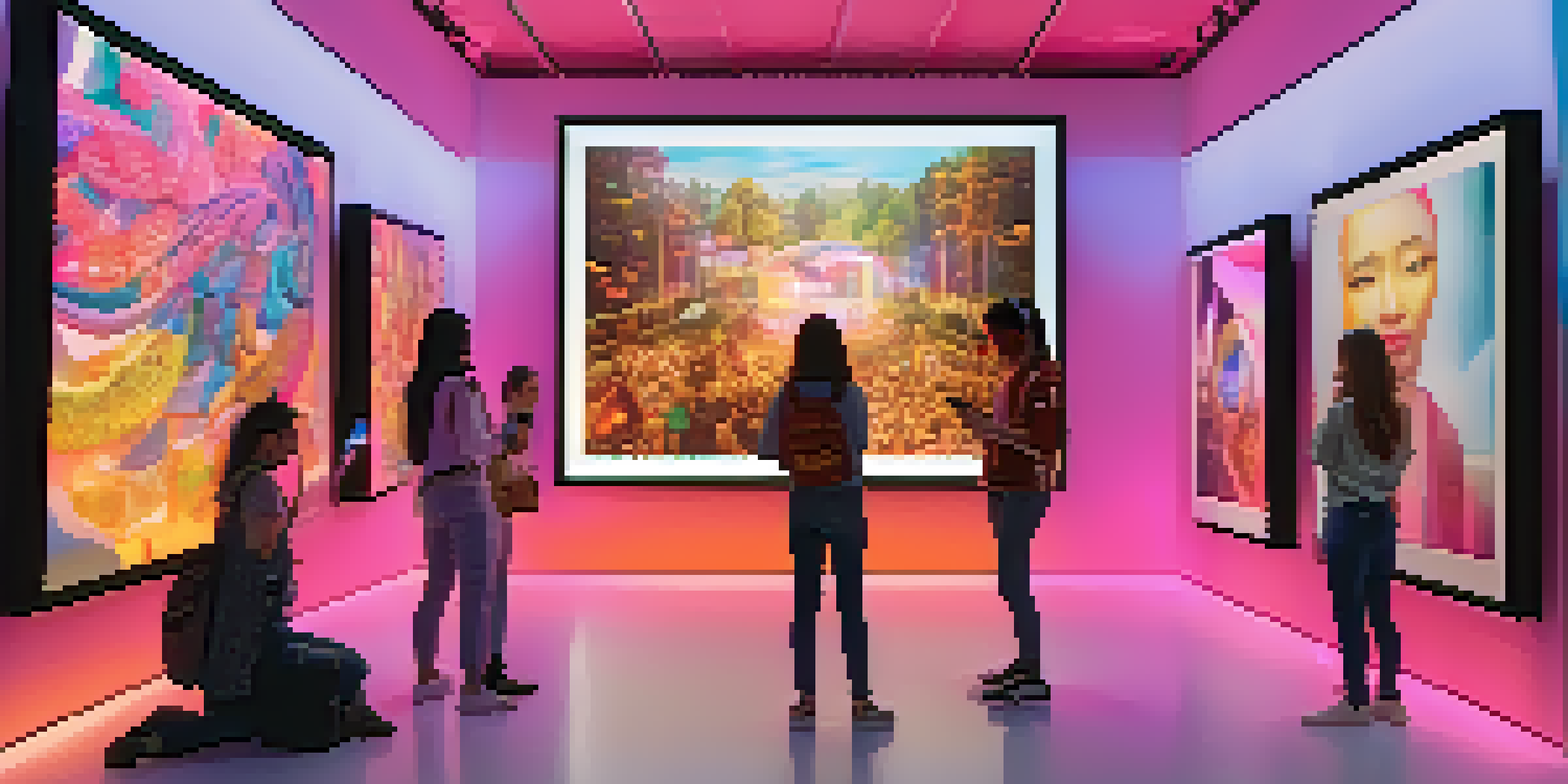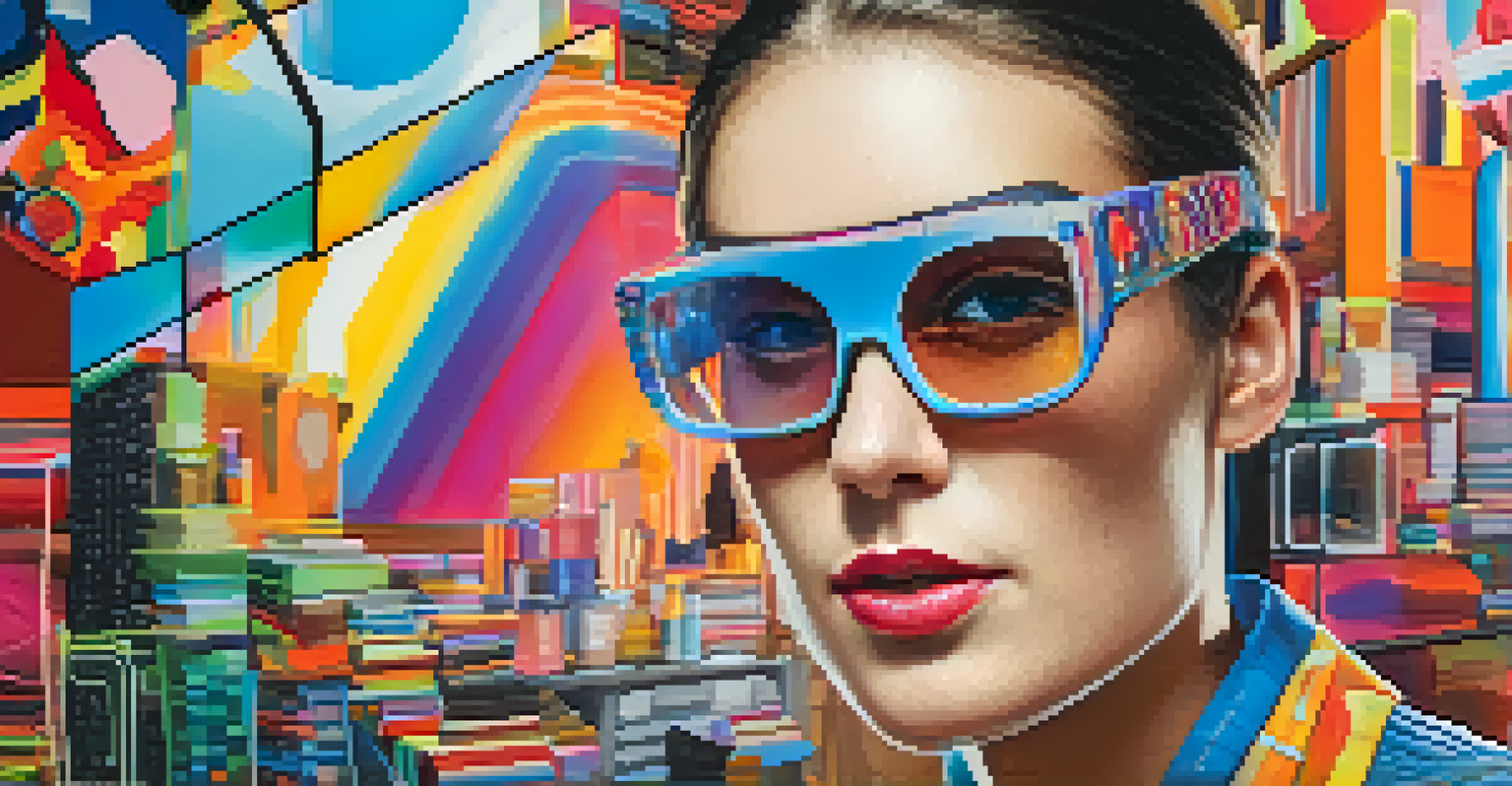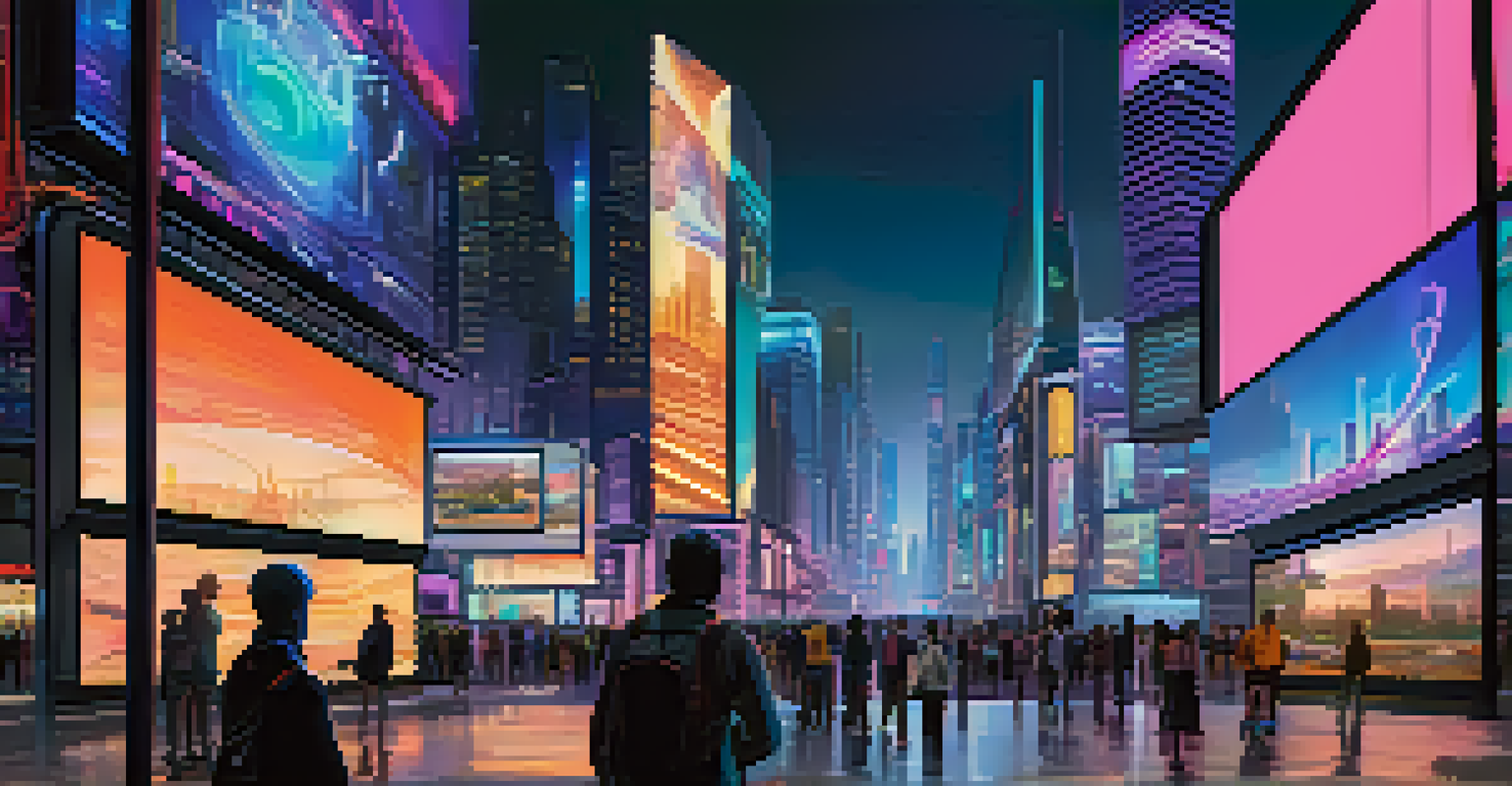NFTs and Augmented Reality: Ethereum's Unique Contribution

Understanding NFTs: The Basics and Beyond
NFTs, or non-fungible tokens, are unique digital assets that represent ownership of a specific item or piece of content, often verified on a blockchain. Unlike cryptocurrencies like Bitcoin, which are interchangeable, NFTs are one-of-a-kind, making them perfect for art, collectibles, and even virtual real estate. Their uniqueness is what gives them value, creating a new way for artists and creators to monetize their work.
NFTs are a new digital frontier that allows creators to monetize their work in unprecedented ways.
Ethereum is the most popular platform for NFTs, thanks to its smart contract functionality. These contracts allow for the creation of NFTs that can include specific conditions and rules, which enhances their functionality. For example, an artist might create a digital artwork that automatically pays them a percentage whenever it is resold, ensuring they benefit from their work long after the initial sale.
As the NFT space continues to evolve, understanding the basics is crucial for anyone looking to dive into this digital frontier. The combination of NFTs and platforms like Ethereum opens up new possibilities for creators and collectors alike, transforming how we interact with digital content.
Augmented Reality: Bridging the Digital and Physical Worlds
Augmented Reality (AR) enhances our perception of reality by overlaying digital information onto the physical world. This technology is increasingly being used in various industries, from gaming to education, creating immersive experiences that engage users in new ways. Imagine pointing your smartphone at a painting and instantly seeing a video of the artist explaining their inspiration—AR makes this possible.

The integration of AR with NFTs creates a unique opportunity for artists and brands to offer interactive experiences. For instance, a digital artist can create an NFT that, when viewed through an AR app, comes to life with animations or sound. This not only adds value to the NFT itself but also enriches the viewer's experience, making art more engaging and accessible.
NFTs Revolutionize Digital Ownership
Non-fungible tokens (NFTs) offer unique digital assets that allow creators to monetize their work and ensure ongoing benefits through smart contracts.
As AR technology continues to advance, it opens up exciting possibilities for combining the physical and digital realms. Whether it’s enhancing an art piece or creating a unique marketing campaign, the fusion of AR and NFTs is set to change how we interact with digital assets.
Ethereum: The Backbone of NFTs and AR Integration
Ethereum's blockchain technology is the backbone supporting the vast majority of NFTs. Its decentralized nature ensures that the ownership and transaction history of NFTs are transparent and secure, which is essential for building trust among users. This reliability is crucial, especially in a landscape where digital art and collectibles can carry significant monetary value.
Augmented reality is about enhancing our world with digital experiences, making the physical world more interactive.
Smart contracts on Ethereum allow for programmable ownership, enabling creators to set specific conditions for their NFTs. This means they can embed features that activate under certain circumstances, like royalties on resale or limited-time access to exclusive content. Such innovations pave the way for more dynamic and engaging NFT experiences, particularly when combined with AR.
By leveraging Ethereum’s capabilities, creators can experiment with interactive elements in their NFTs, pushing the boundaries of what digital assets can do. As both AR technology and NFTs evolve, Ethereum remains at the forefront, driving innovation in how we perceive and interact with digital art.
Real-World Applications of AR and NFTs on Ethereum
The combination of AR and NFTs on Ethereum is being utilized in various real-world applications. For example, museums are starting to adopt AR to enhance visitor experiences, allowing users to view additional information about exhibits through their devices. When these digital enhancements are tied to NFTs, it creates a unique collectible experience that can be accessed from anywhere.
Fashion brands are also exploring this integration by creating virtual try-on experiences using AR, where customers can see how a digital garment looks on them before purchasing the NFT version. This not only revolutionizes shopping but also creates a new avenue for designers to showcase their work in a more interactive way.
AR Enhances User Engagement
Augmented reality (AR) technology overlays digital information onto the physical world, creating interactive experiences that enhance the value of NFTs.
These examples illustrate how Ethereum is not just a platform for digital transactions but also a catalyst for innovation across different sectors. By combining AR with NFTs, creators and businesses can offer immersive experiences that engage customers on a deeper level.
Challenges and Opportunities in the NFT and AR Space
While the fusion of NFTs and AR presents exciting opportunities, it also comes with challenges. One major hurdle is the technological barrier; not everyone has access to the devices or apps required to experience AR fully. This can limit the reach of AR-enhanced NFTs, making it essential for developers to find ways to make these experiences more accessible to a wider audience.
Additionally, the environmental impact of NFTs, particularly on Ethereum, has raised concerns about sustainability. As the demand for NFTs grows, so does the need for greener solutions, such as Ethereum's transition to a proof-of-stake model. This shift aims to reduce energy consumption, making it a more eco-friendly option for creators and collectors alike.
Despite these challenges, the potential for innovation remains immense. By addressing these issues head-on, the NFT and AR community can create sustainable and inclusive experiences that capture the imagination of users worldwide.
The Future of NFTs and Augmented Reality on Ethereum
Looking ahead, the future of NFTs and AR on Ethereum is bright, with endless possibilities for creative expression and interaction. As technology continues to advance, we can expect more sophisticated and immersive experiences that blend the digital and physical worlds seamlessly. This evolution will likely attract a broader audience, from tech enthusiasts to casual art lovers.
In the coming years, we may see more collaborations between artists and developers, leading to innovative projects that push the boundaries of what NFTs can achieve. Imagine a world where every piece of art has an AR component, allowing users to experience it in unique ways—this is just the beginning of what’s possible.
Ethereum Powers NFT and AR Innovation
Ethereum’s blockchain technology supports the secure and transparent ownership of NFTs, enabling dynamic features and new possibilities for creators.
Ethereum's ongoing developments and the growing interest in NFTs and AR suggest that this intersection will become a significant part of our digital landscape. As these technologies mature, they will not only change how we perceive art and ownership but also transform how we engage with the digital world.
How to Get Involved in the NFT and AR Community
Getting involved in the NFT and AR community may seem daunting, but it’s more accessible than ever. Start by exploring platforms where NFTs are bought and sold, such as OpenSea or Rarible, to familiarize yourself with the marketplace. Engaging with artists and creators on social media can also provide valuable insights and help you understand the latest trends in this space.
Many communities are dedicated to educating newcomers about the NFT and AR landscape. Joining forums, attending virtual events, or participating in webinars can enhance your knowledge and connect you with like-minded individuals. These interactions not only enrich your understanding but can also lead to collaborative opportunities.

Finally, consider experimenting with creating your own NFTs, even if it’s just for fun. There are user-friendly tools available that guide you through the process, making it easier to dip your toes into this exciting world. As you explore, remember that the community thrives on creativity and innovation, so don’t hesitate to share your ideas and projects.